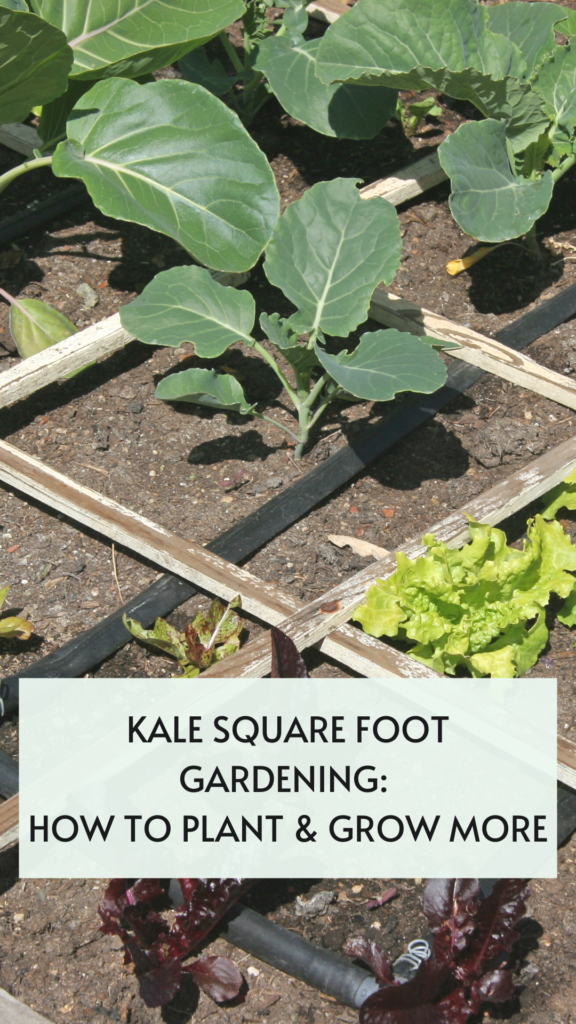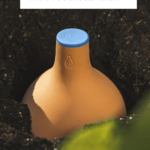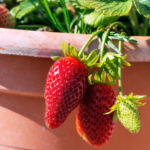Are you researching kale square foot gardening? Square foot gardening is a great way to different types of kale in a small space.
Kale, a nutrient-dense superfood, has become increasingly popular among gardening enthusiasts due to its numerous health benefits and hardy nature. One effective and space-saving method to grow this leafy green is through square foot gardening. This innovative technique maximizes the use of limited spaces while promoting sustainability and productivity.

FTC DISCLOSURE: Some of the links in this post are affiliate links. If you click on them and make a purchase, I will receive a small finder’s fee on the sale. This does not increase your price in any way shape or form. Using these links help support the continuation of this website. All opinions are my own. Thank you in advance.
What is square foot gardening?
Square foot gardening involves dividing a garden bed into one-foot squares, each assigned to a specific plant. This method allows gardeners to closely monitor plant growth, making it easier to tend, harvest, and optimize plant spacing. Additionally, the systematic spacing reduces the need for constant weeding and minimizes the risk of disease spreading between plants.
By embracing square foot gardening, individuals can grow multiple plants in smaller gardens, urban environments, or even on balconies. The adaptability and convenience offered by this approach make it an attractive option for those looking to introduce kale into their diets and enjoy the benefits of homegrown produce.
What Is Kale Square Foot Gardening?
Kale square foot gardening is an efficient method of growing kale in a compact and organized manner. This method utilizes a garden grid divided into one-square-foot sections, allowing gardeners to optimize space and increase productivity. The key to success in kale square foot gardening is proper planning, planting, and maintenance.
How much sunlight do kale plants need?
Before starting, gardeners should prepare a well-draining garden bed with nutrient-rich soil. It is essential to provide kale plants with ample sunlight, so selecting a spot with at least 6-8 hours of full sun is crucial. To ensure a successful harvest, the soil should have a pH level between 6 and 7.
Next, the garden bed should be divided into square feet to create individual planting sections. This can be done using wooden or plastic dividers, string, or any other material that can create a visual guide. To identify the best layout for kale, gardeners must consider the number of plants to be grown along with the required spacing. Kale varieties typically need one plant per square foot to encourage healthy growth.
After dividing the garden bed, gardeners can begin planting kale seeds or seedlings in each section. It is wise to stagger planting times to enable a continuous harvest throughout the growing season. In a square foot gardening layout, companion planting or companion gardening for fruits and vegetables is an important factor to consider, as certain plants may benefit each other when placed close together. Popular companions for kale include beets, lettuce, and onions.
Regular care and maintenance of the kale square foot garden involve watering consistently, preferably with a drip irrigation system, and monitoring the soil for optimal moisture levels. Overwatering can lead to root rot and other diseases, while underwatering may result in stress and poor growth of kale plants.
Gardeners must also keep an eye out for pests such as aphids or cabbage worms, which can be controlled using organic or chemical treatments as necessary.
I have recently been using and loving these row covers for kale, Brussels sprouts, and brassica plants. This will keep cabbage loopers and other pests away from my young plants and young leaves.
Benefits of Kale Square Foot Gardening
Space Saving benefits of square foot gardening
Kale square foot gardening maximizes the use of limited space. By carefully planning and dividing the garden into square feet, it is possible to grow multiple kale plants in a compact area. This is especially beneficial to urban gardeners or those with limited outdoor space. Square foot gardening allows for a productive and organized garden, ensuring kale plants grow efficiently and yield a bountiful harvest.
Water Conservation
Another advantage of kale square foot gardening is water conservation. Because the plants are grown together in a small area, watering can be more targeted and precise. This ultimately leads to less water waste, making square foot gardening an environmentally friendly option. Efficient watering also ensures that the kale plants receive the optimal amount of moisture, contributing to their healthy growth and development. You also want to try to use well-drained soil. We have been using this soil as a top soil and amending it with this compost when ours is not ready.
Pest Control
Kale square foot gardening can also help with pest control. By growing multiple kale plants closely together, it becomes more difficult for pests to establish themselves in the garden. Additionally, the diverse plantings that are common with square foot gardening methods can attract a variety of beneficial insects that combat common pests. This reduces the need for chemical pesticides and promotes a more natural ecosystem within the garden.
Easy Harvest
Lastly, kale square foot gardening simplifies the harvest process. Because the plants are grown in a compact and organized manner, it becomes significantly easier to identify when the kale is ready for harvest. This ensures that the kale is picked at its peak nutritional value and taste. Furthermore, the simple layout of square foot gardens allows for easy access to the plants, making the harvesting process more manageable and efficient.
Planning and Designing a Kale Square Foot Garden
Required Materials
To set up a successful square foot garden for kale, you will need:
- A raised bed: This should be 4 ft x 4 ft or larger, and at least 6-12 inches deep.
- Soil mix: A blend of peat moss, vermiculite, and compost is recommended.
- Grid: Can be made using wood or string, dividing the garden bed into 1 ft x 1 ft sections.
- Kale seeds or seedlings: Choose kale varieties according to personal preference and growing conditions.
- Trowel or small garden spade: For digging holes or leveling soil.
- Watering can or hose: To provide water to the growing kale plants.
Layout and Spacing
To maximize growing space, the layout of a kale square foot garden should follow some general guidelines:
- Divide the raised bed into 1 ft x 1 ft sections, using the grid. Each section will accommodate one kale plant.
- Place the kale seeds or seedlings in the center of each section, following the recommended spacing for each kale variety. Generally, 8-12 inches apart should suffice for their growing area even when it grow ti full-sized plants. An example square foot grid layout for gardening could be:
| Kale | Kale | ||
| Kale | Kale | ||
| Kale | Kale | ||
| Kale | Kale |
- Alternate plant directions for better access to sunlight – for example, one row with kale on the left side of the section, and the next row with kale on the right side.
By considering these design elements, one can optimize their kale square foot garden for plentiful and healthy growth.
Some people also use a seed spacing tool for square foot gardening.
Planting and Growing Kale in a Square Foot Garden
Soil Preparation
Before planting kale in your square foot garden, it’s crucial to prepare the soil correctly. Ensure that the soil is well-draining, fertile, and has a slight acidic pH level of 6.0-7.0. You can amend the soil with compost rich with organic matter, aged manure, or an organic all-purpose fertilizer to provide the necessary nutrients for kale growth.
Seeding or Transplanting
When it comes to planting kale, you can either grow it from seeds or transplant seedlings. If you prefer to start with seeds, sow them 1/4-inch deep and about 12 inches apart within each square. Keep the soil moist until seedlings appear, which typically takes 7-10 days. Transplanting kale seedlings is an alternative that can save you a few weeks of growing time. Space the seedlings 8-12 inches apart within each square, making sure to plant them at the same depth they were in their original container with potting or container soil with good drainage.
Ongoing Care
Proper care is necessary to ensure a successful kale harvest in a square foot garden:
- Watering: Keep the soil consistently moist but not soggy. Aim for at least 1 inch of water per week, either through rain or supplemental watering.
- Weeding: Regularly remove any weeds that appear in your square foot garden to prevent competition for nutrients and water.
- Fertilizing: Every 4-6 weeks, apply an organic all-purpose fertilizer or a nitrogen-rich liquid fertilizer to encourage healthy growth.
- Pest Control: Inspect your kale plants for common pests such as aphids and cabbage worms. Remove them manually or treat with organic pesticides if needed.
- Harvesting: Begin harvesting kale leaves when they are at least the size of your hand. Pick outer leaves first, allowing the center leaves to continue growing.
By following these guidelines, you’ll be well on your way to growing a successful kale crop in your square foot garden.
Harvesting and Storing Kale
When to Harvest
Kale can be harvested as soon as the leaves are large enough to eat, typically when they reach around 4 inches in length. Since kale is a cut-and-come-again crop, it can be harvested continuously throughout the growing season, resulting in multiple harvests. To enjoy tender leaves, it’s best to harvest them while they’re still young and small. In general, kale tends to taste sweeter after the first frost, making it an excellent choice for fall and winter harvesting during cold temperatures.
Proper Harvesting Techniques
Harvesting kale is relatively simple, and there are a few methods available:
- Hand-picking: Gently hold the leaf at the base and pull it away from the stem.
- Scissors or pruners: Cut the leaf stem about 1 inch above the main stalk, being careful not to damage newer growth at the top of the plant.
- Whole plant harvest: In case a single harvest is desired, cut the main stalk about 2-3 inches above the soil level, and new growth will sprout from the cut stem.
When harvesting, it is important to start from the lower, outer leaves and work your way up to the top, which encourages new growth. Avoid taking more than a third of the plant at once to prevent stress and ensure a continuous supply of leaves.
Storing Kale
To maintain the freshness and nutritional value of harvested kale leaves, proper storage is essential. Here are a few options for short-term and long-term storage:
- Refrigerator: Store washed and thoroughly dried kale leaves in a plastic bag or sealed container with a damp paper towel. They can last for up to 1-2 weeks in the refrigerator.
- Freezer:To freeze kale, follow these steps:
- Blanch the kale leaves in boiling water for 2 minutes, then immediately place them in ice water to stop the cooking process.
- Drain and dry the leaves thoroughly.
- Pack the leaves in freezer-safe bags or containers, removing as much air as possible.
- Store in the freezer for up to 12 months.
- Dehydrating: Dehydrated kale can be used in soups, smoothies, or even as a crunchy snack. To dehydrate, simply spread the washed and dried leaves on a dehydrator tray, set the temperature to 125°F (52°C), and dry for 4-6 hours or until they are crispy. Store the dried leaves in an airtight container in a cool, dry place.
By following these guidelines on when to harvest, proper harvesting techniques, and storing kale, it’s easy to enjoy delicious and nutrient-rich kale from a square foot garden all season long.











